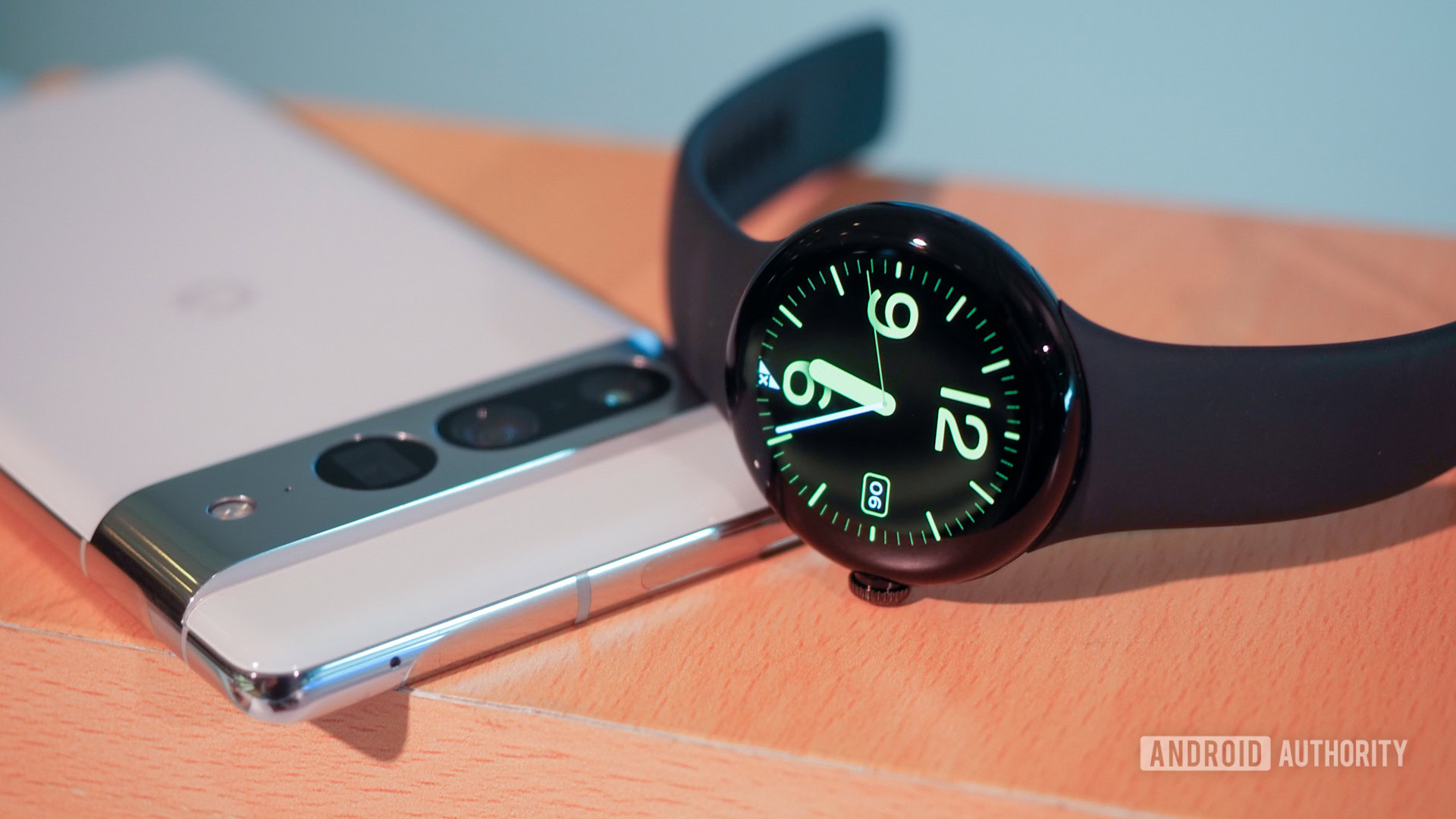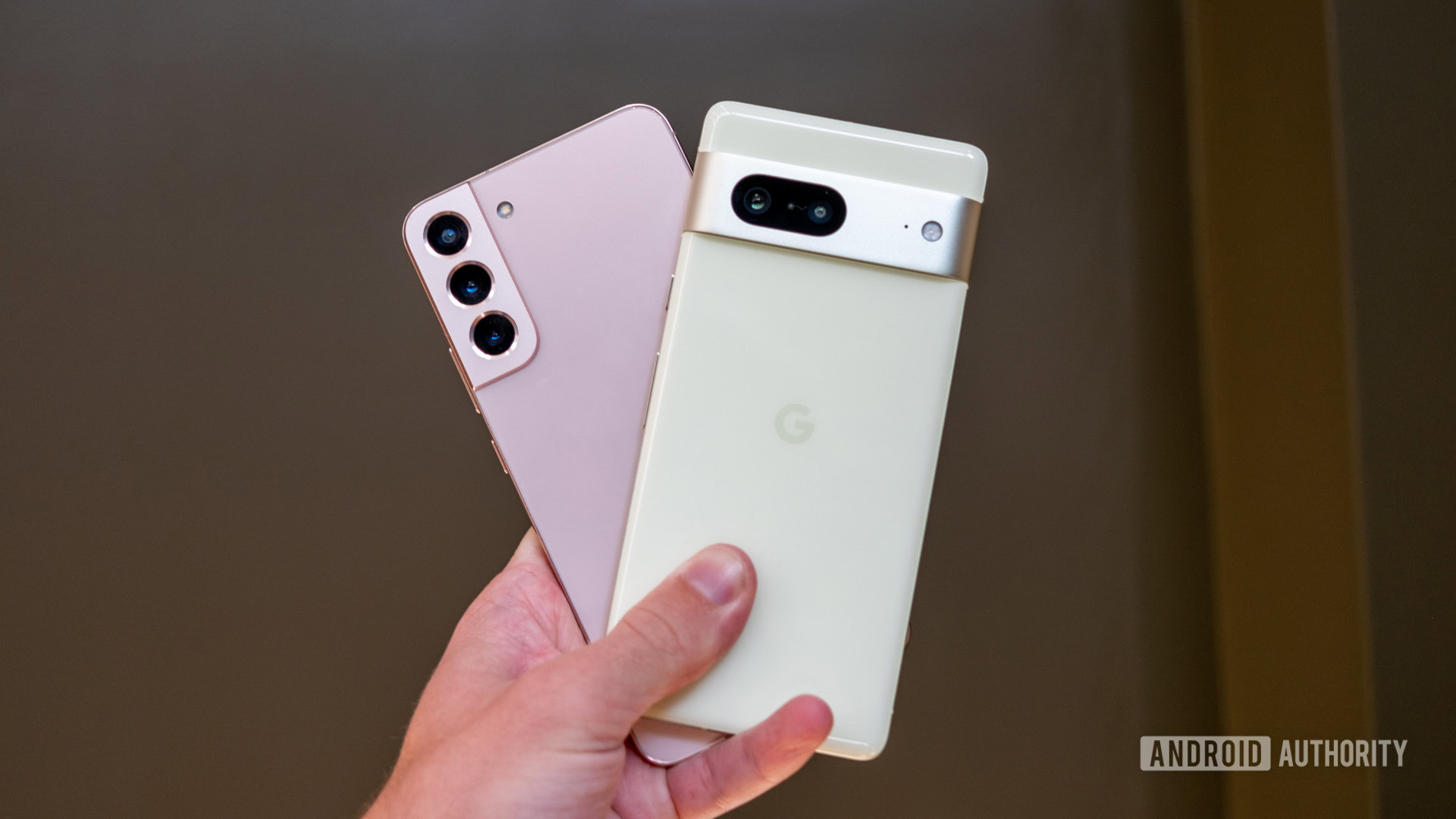Affiliate links on Android Authority may earn us a commission. Learn more.
Hey Google, a $350 smartwatch deserves more than 3 years of software updates

After years of rumors and leaks, Google finally took the wraps off the Pixel Watch earlier this week. However, the company left out one key detail during the presentation — how long it will support its first-ever Wear OS smartwatch. Luckily for us, Google’s own product documentation website goes into more detail. Just like the Pixel 7 series, the Pixel Watch will get three years of guaranteed software updates, up until October 2025 (Pixel 7 handsets will see a further two years of security updates too).
If that three-year OS promise doesn’t sound very impressive, allow me to reassure you that it’s not. Let’s start with the Pixel Watch. It faces two big competitors at the moment and both outdo Google handily in terms of support. Samsung’s Galaxy Watch 5, which is built on the same Wear OS foundation, will receive four years’ worth of software updates. The Apple Watch Series 8, meanwhile, will be supported for five whole years based on past trends.
Samsung and Apple both offer longer software support for their respective phones and smartwatches.
As a prospective Pixel Watch buyer, it’s disappointing to know that the clock is already ticking. If I don’t pick one up at launch, I’ll be buying a product that’s already hurtling toward a set expiration date. While I do agree that Google has to draw a line somewhere, three years isn’t nearly enough for a device that will stay on shelves for a third of that time.
Moreover, considering Google’s tendency to shut down beloved services, I’m a little wary about buying a first-generation product. While I doubt it will share Stadia’s fate, Google’s reluctance to make a long-term commitment doesn’t inspire confidence. By contrast, long-term updates would enshrine Google’s commitment, though that would be costly for the company if its first-gen product flops. Indeed, the Galaxy Watch 5 looks like the safer bet, and that’s before we even discuss price. Samsung’s offering is 25% cheaper than the Pixel Watch.
Long-term support might inspire more confidence in Google's first watch.
Before the announcement, I’d hoped the Pixel Watch would become an industry benchmark for long-term software support, similar to the Nexus series. Instead, I’m now reminded of how little has changed since the late 2010s. Most Wear OS smartwatches at that time, including my second-gen Moto 360, received just two to three years of software updates.
Opinion: The Pixel Watch can’t succeed if Google reuses the same 8-year-old formula

It’s not just the Pixel Watch that disappoints on the software updates front; Google’s Pixel 7 series will also receive three Android version updates. They will still see security patches for a couple of years beyond 2025, but don’t expect any new feature drops.
When Google announced that it is using custom silicon for the Pixel series, many speculated that the move would bring longer support windows. This made sense as Google no longer has to rely on a third-party chip vendor to release updated drivers or provide support. But even though Google negotiated with Qualcomm to ensure three OS updates for Snapdragon SoCs launched after 2020, the search giant hasn’t moved past that benchmark for its own devices. It’s not clear why. Perhaps cost is still a barrier given the Pixel’s relatively small sales volume.
The Pixel 7 series will get three OS updates and five total years of security updates.
Meanwhile, the competition has caught up with Google. Xiaomi was once derided among Android enthusiasts for its inconsistent software support. Yet, the company has promised to deliver three years of OS updates and four years of security patches to the Xiaomi 12 series. To be clear, you get an additional year’s worth of security updates with the Pixel 7, but that’s only a slim victory when you consider how far ahead Google once was.
And then there’s Samsung. The South Korean company now leads the Android market in terms of software support. With four years of OS updates and five total years of security patches, it’s not far from matching Apple’s excellent track record. For some context, the iPhone 8 from 2017 got this year’s iOS 16 update. Samsung’s update policy also applies to mid-range smartphones like the Galaxy A53 5G, which competes against the affordable Google Pixel 6a rather than the Pixel 7 and Pro.
If Google wants to rival the iPhone, it needs to do better than half as many years of OS updates.
Granted, there’s still one benefit to owning a Pixel — you get software updates sooner than the rest. Android 13, for example, hasn’t made its way to most non-Pixel smartphones just yet. Even though Google hosts a beta program every year, most manufacturers only seem to accelerate development after the stable release.
However, faster updates don’t compensate for a shorter support window. I’d also argue that many Pixel owners, at least today, buy into the ecosystem for Google’s clean and feature-rich Pixel UI. These discerning users are more likely to compare their smartphones’ software longevity against the gold standard. If Google wants to sell a premium experience that rivals the iPhone, it needs to do better than half as many years of OS updates. And more importantly, we still need Google to lead by example and keep the Android industry on its toes. I doubt Samsung and Xiaomi would’ve improved their policies if it wasn’t for the competition.
Do you care about software updates beyond three years?
All in all, I hope Google considers upping its commitment to long-term software updates across the Pixel ecosystem — if not for the benefit of customers, then at least for the environment. Smartphone hardware has reached the point of diminishing returns, and with Google’s self-repair and other sustainability initiatives, we should have the choice to continue using our existing hardware for longer.
See also: It’s time to ditch our fascination with the yearly upgrade cycle